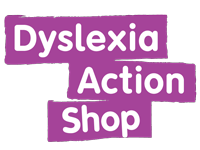This website uses cookies to ensure you get the best experience on our website. About consent.
KTEA-3 - Kaufman Test of Educational Achievement, Third Edition, Product Range
Required qualifications
QTS/QTLS or equivalent and CCET Level 7or QTS/QTLS or equivalent and Professional Body Membership e.g. DA Guild MDG
or QTS/QTLS or equivalent and Assessment Qualification at Level 7 e.g. CPT3A
or Assessment Qualification at Level 7 e.g. CPT3A and HLTA Status
or QTS/QTLS or equivalent and PGCert /PGDip/MA/MEd/MSc in SEN (including psychological assessment) SpLD APC or equivalent
or BA (Hons) / B.Ed Hons or Bsc subject and Professional Body Membership e.g. DA Guild MDG
or HCPC Registered Practising, Chartered, Clinical, Forensic or Educational Psychologist
or Psychologist, SaLT or OT
KTEA-3 is an individually administered battery that provides in-depth assessment of key academic skills
Kaufman Test of Educational Achievement, Third Edition (KTEA-3)
KTEA-3 is an individually administered battery that provides in-depth assessment of key academic skills, and is easy to administer, score and interpret.
What’s New
There are several new subtests available in the KTEA-3:
-
New! Writing Fluency (WF)
-
New! Silent Reading Fluency (SRF)
-
New! Math Fluency (MF)
-
New! Reading Vocabulary (RV)
Updated artwork and updated norms for ages 4:0 to 25:11. The subtests have been revised with new items and improved content coverage.
Benefits
-
Evaluate academic skills in reading, maths, written language, and oral language
-
Measure progress or response to intervention and adjust instruction based on performance
-
Identify learning disabilities on a core level
-
Qualitative observations checklist for suggesting possible areas of processing weaknesses
-
Lower age range to age 4 and preschool norms to identify issues earlier
-
Intervention suggestions for parents and teachers to expand the effectiveness of your evaluation
-
Behavioural checklist to look at how the child responds during testing
-
Novel tasks to motivate low-functioning students
-
Alternate forms and Growth Scale Value (GSV) to easily measure progress
What’s Included
Form A Kit
-
Administration Manual
-
Scoring Manual
-
2 Stimulus Books
-
USB Flash Drive (contains Technical Manual, Audio Files, Scoring Keys, Hand Scoring Forms, Letter Checklist, Qualitative Observations Form, Error Analysis Forms)
-
Form A Record Forms (25)
-
Form A Response Booklet (25)
-
3 Form A Written Expression booklets (2 each)
-
Soft-sided carrying bag
Form B Kit
-
Administration Manual
-
Scoring Manual
-
2 Stimulus Books
-
USB Flash Drive (contains Technical Manual, Audio Files, Scoring Keys, Hand Scoring Forms, Letter Checklist, Qualitative Observations Form, Error Analysis Forms)
-
Form B Record Forms (25)
-
Form B Response Booklet (25)
-
3 Form B Written Expression booklets (2 each)
-
Soft-sided carrying bag
Subtests
-
Phonological Processing (PP)
-
Math Concepts & Applications (MCA)
-
Letter & Word Recognition (LWR)
-
Math Computation (MC)
-
Nonsense Word Decoding (NWD)
-
New! Writing Fluency (WF)
-
New! Silent Reading Fluency (SRF)
-
New! Math Fluency (MF)
-
Reading Comprehension (RC)
-
Written Expression (WE)
-
Associational Fluency (AF)
-
Spelling (SP)
-
Object Naming Facility (ONF)
-
New! Reading Vocabulary (RV)
-
Letter Naming Facility (LNF)
-
Listening Comprehension (LC)
-
Word Recognition Fluency (WRF)
-
Oral Expression (OE)
-
Decoding Fluency (DF).
Description
The Kaufman Test of Educational Achievement, Third Edition (KTEA–3) helps you to quickly and easily identify strengths and weaknesses, to help you determine the right intervention to follow-up with. It also provides a deeper understanding of achievement gaps, so that you can help your students to achieve their potential. KTEA-3 is an individually administered measure of academic achievement, a comprehensive assessment that evaluates key reading, maths, written language, and oral language skills. It covers a wide range of achievement and language domains and includes two independent, concurrently normed parallel forms (A and B) to help you accurately measure academic progress and minimise practice effects.
KTEA-3 and the Disabled Students Allowances (DSA)
KTEA-3 has been reviewed, and additional guidelines about using the KTEA-3 for Assessment of Specific Learning Difficulties (SpLD) in Higher Education/DSA applications can be found on the SASC website.
It is important to read and consider the additional guidelines that have been issued when using this test for the purpose of DSA applications.
Age range: 4 years to 25 years 11 months
Administration: Paper and pencil
Published Date: 2014
Publisher: Pearson Clinical
Authors: Alan S Kaufman, Nadeen L Kaufman


